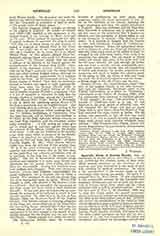

Apostolic Union of Secular Priests, the, an association of secular priests who observe a simple rule embodying the common duties of their state, afford mutual assistance in the functions of the ministry, and keep themselves in the spirit of their holy vocation by spiritual conferences. Its object is the sanctification of the secular clergy in their missionary lives among the people. Its spirit is a personal love for Jesus Christ. It was established in the seventeenth century by the Venerable Bartholomew Holzhauser, and was revived and reorganized in France about forty years ago by Canon Lebeurier, who is still its president-general. One of the first acts of Pius X, December 20, 1903, was to take the Union under his special protection, whilst increasing its indulgences and spiritual favors. The Brief of the Holy Father (Arta S. Sed., XXXVI, 594) recites the establishment of the Union in 1862, and its spread to a great number of dioceses throughout the Christian world, in France, Belgium, Austria, Ireland, Germany, Switzerland, Italy, United States, Canada, South America, Australia, and parts of Asia. The Holy Father proclaims the fact that he was a member of it, and had experienced its utility and excellence, and admits the advantages derived from it, even after his elevation to the episcopate. The brief goes on to summarize its organization. Proposing as it does to all its associates a uniform rule of life, monthly reunions and spiritual conferences, and the submission of a bulletin regularly to the superior, it strengthens union among the clergy and unites by a bond of spiritual fraternity priests who are scattered far apart. The dangers of solitude are removed, and there is a concentrated effort on the part of all to attain the common end. Each priest under these conditions devotes himself to the wellbeing and perfection of all, and, though prevented by the cares of his ministry from enjoying the advantages of living in community, he does not feel that he is deprived of the benefits of the religious family; nor are the counsels and assistance of his brothers wanting. The brief then recites the approval of the institute by Leo XIII in Apostolic letters of May 31, 1880, and again in 1887, when he gave it as a cardinal-protector the Cardinal Vicar of Rome, Monsignor Lucido Parrocchi. Then follows a recital of the indulgences and special privileges granted to the priests who are members. These may be found in Beringer, ed. 1905, II, 450.
The means by which the ends proposed are attained are as follows: (I) The rule is the bond of this society, and its vital principle; insisting on the fact that the priest ought to study, love, and imitate Jesus Christ, it maps out the life of the priests of the Apostolic Union, indicating to them the spiritual exercises and the ecclesiastical study for each day, each week, each month, each year, and counsels with regard to the holy ministry. (2) The monthly bulletin, which is a kind of examination on the principal exercises in the rule of life. It is so arranged that the member can indicate every day his performance of the duty imposed. There is a code of signs employed for this purpose. The bulletin is sent monthly to the diocesan superior, who returns it with his comments. This monthly bulletin, marked carefully each day and examined by the superior, assures regularity, maintains fervor, guards against failures and diminishes faults; it establishes the spirit of order, self-denial, obedience and humility, and secures the benefits of spiritual direction. (3) Reunions are more or less frequent according to circumstances. Where the associates are numerous, they are divided into groups, each of which has its reunion at a central point. It is quite a common practice for the members to make a monthly retreat in common. They also assemble, wherever circumstances permit, once a year to make a retreat of at least five days. (4) The works of zeal supported by the associates are the recruiting of the clergy and the nurture of ecclesiastical vocations. (5) The common life. The Apostolic Union favors the practice of the clergy of the same parish living in common wherever this can be advantageously done. The associates recite daily a prayer to which is attached a special indulgence. (6) Organization. The different diocesan organizations canonically erected are united under a president-general, who has over him a cardinal-protector. The common bond is simply the adoption of the general rule of the Union. Each diocesan association chooses its superior, and the associates are bound to the superior by the practice of the monthly bulletin. There is an organ, “Etudes Ecclesiastiques”, which is a monthly review dedicated to the interests of parochial clergy.
JOSEPH H. MCMAHON

